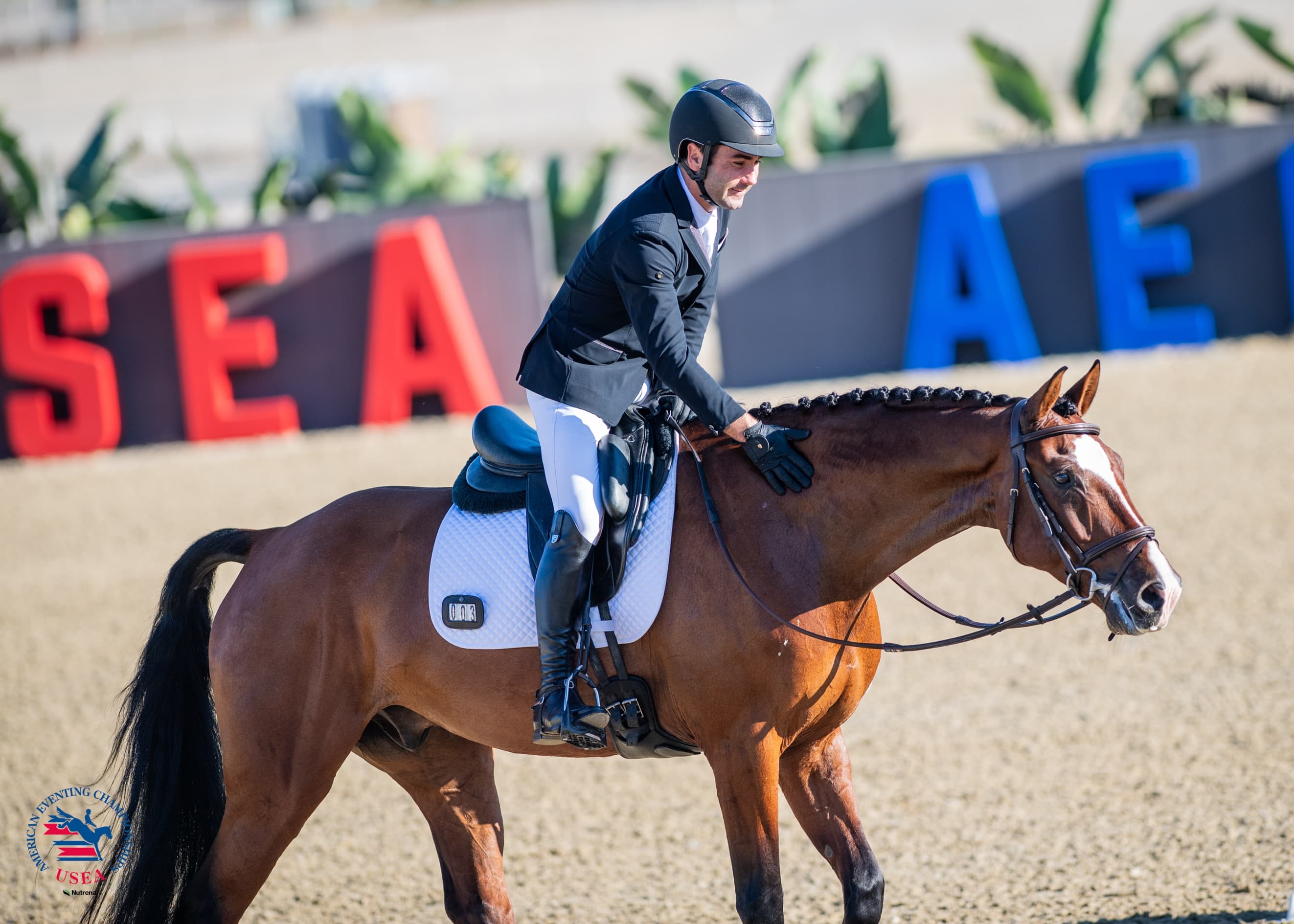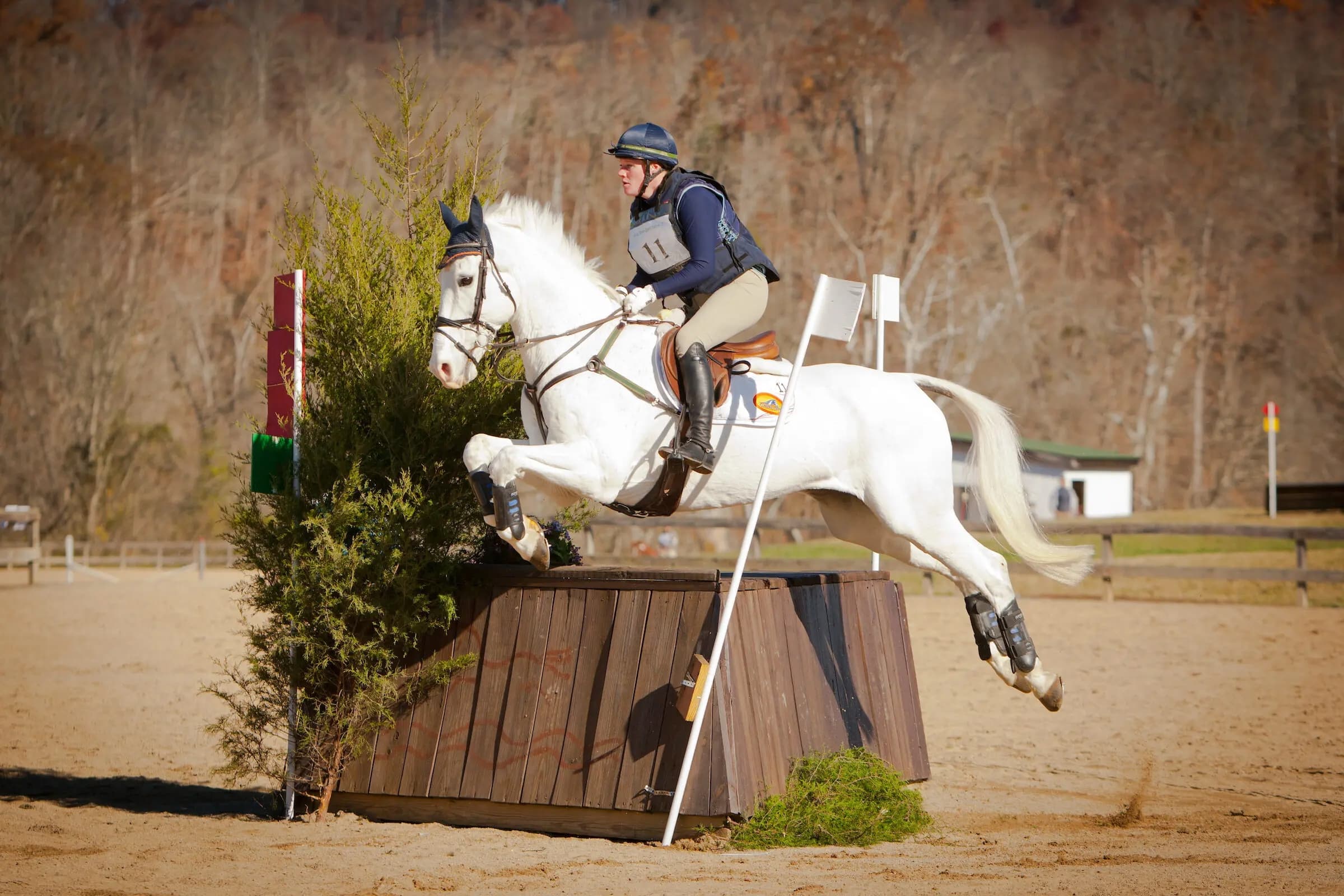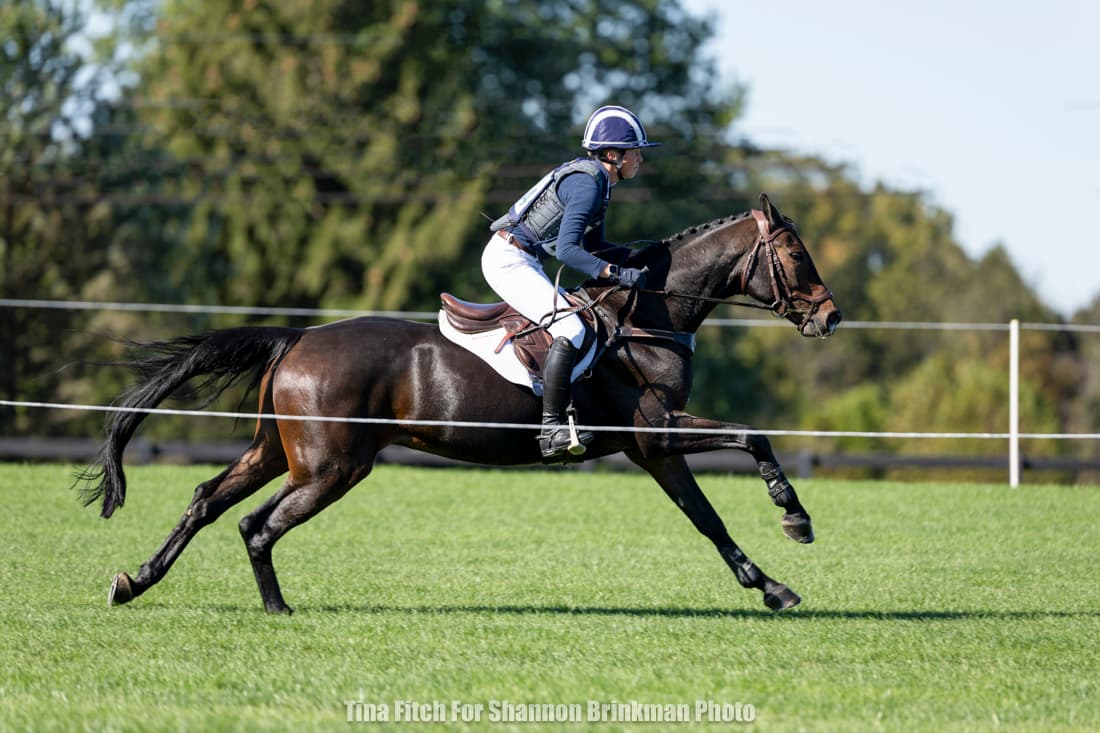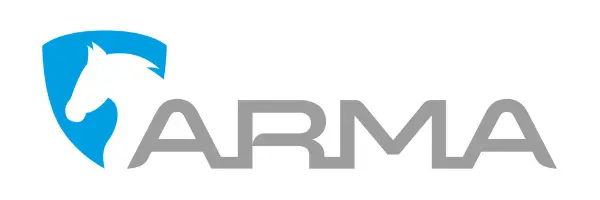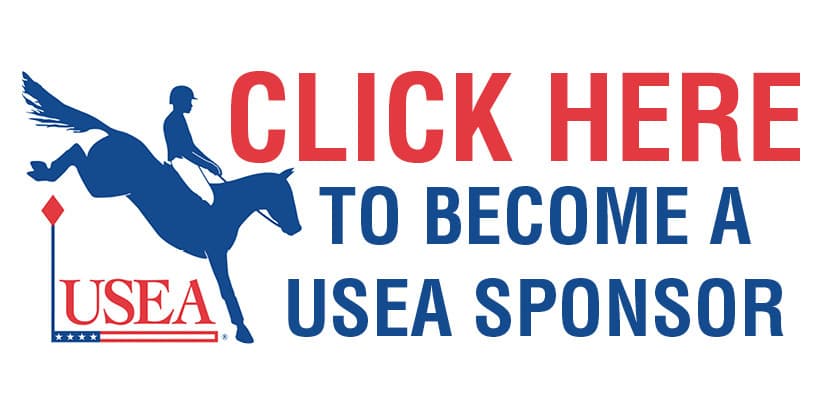Friday Coverage of the USEA 50th Anniversary Convention & Annual Meeting
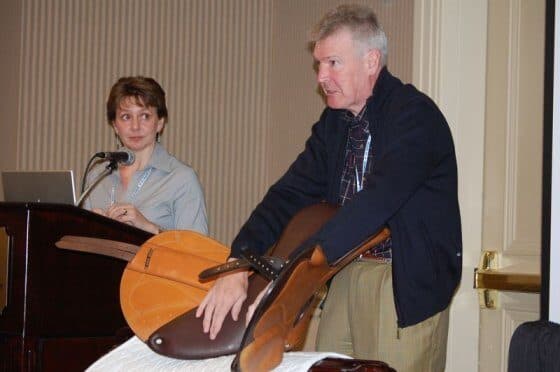
Though the highlight of the day was the Awards Luncheon, check out some of the great educational seminars and meetings that took place today during the 2009 USEA 50th Anniversary Convention & Annual Meeting.
Training Solutions from Top Riders, Presented by the USEA ICP - Speakers: Buck Davidson, Will Coleman, Phillip Dutton, Mike Huber, Karen O'Connor, Kim Severson, and Allison Springer
A panel of the “who’s who” of the event world spoke to a packed room of eager members on Friday morning at the USEA’s Annual Convention. During her introduction, Karen O’Connor created the parallel that there are “many roads that lead to Rome” in terms of the riders on the panel and their different approaches to training. With that she announced that the one hour session would be an open format, allowing the audience to tap into the training solutions of the nation’s top competitors.
The questions from the audience were numerous, and covered a wide variety interesting topics. Here is an excerpt of some of those questions:
1. At the lower levels of eventing, where do you see room for improvement in the warm-up?
The overall consensus from the panel addressed that time spent in the warm-up needed to be more about engaging the horse and rider for the task at hand, and was not an appropriate time for a riding lesson. Phillip Dutton remarked that people who come into the warm-up unprepared for riding cross-country needed to focus beforehand on what they needed to do on course. This was also reinforced by Buck Davidson, who emphasized that trainers and riders needed to ensure that their homework was done prior to entering the warm-up. Kim Severson wrapped up this topic by suggesting that trainers shift the focus to the security of rider’s position, and to refrain from over jumping in the warm-up.
2. When is it determined that a horse &and rider are ready to move up to the next level?
Again the panel was in agreement that all riders should stay at their appropriate level until ready to move up. Mike Huber emphasized that riders needed to evaluate their proficiency on the cross-country. Allison Springer very wisely advised that riders and trainers need to “Make sure your horse understands all the questions at the current level, almost to the point of boredom." Once that is accomplished, then have a discussion with your training about the appropriate time to move up a level. It was also refreshing to hear her say that “it’s okay to stay where you are comfortable and to enjoy your current level. That is a big part of sportsmanship“.
3. How much emphasis do you put on rider fitness and what practices do you suggest?
Karen mentioned with a laugh and a poke at Mike Huber, that “As you get older, you must do other things to help with your fitness." Whether it is aerobic or weight training, she found time for cross training in other sports. If looking for fitness techniques while in the saddle, “gallop sets with shorter stirrups & being stable in your position with the ability to sustain that (position) for an extended period of time” is a great test of one’s fitness level. Allison also saw a huge benefit through the practice of yoga, which had proven helpful with maintaining a strong yet soft position in dressage.
4. What are your favorite clinic exercises?
Will: “Start without stirrups or take away a rider’s tool (ie: one hand behind the back) to sharpen your balance & intuition”.
Buck: Set up exercises to measure your speed to the jump. Incorporate gymnastics to adjust balance on strides”.
Karen: “Do all your dressage movements in your jumping position” as a change of pace. “Give riders lots of things to do AFTER the jumps to encourage landing with correct posture and the use of core strength”.
Mike: “Set smaller jumps with poles and turns. Take the short approach and utilize small figure eights which promotes better schooling for the horse and to better able master the flying change”.
Phillip: “Work with poles on the ground and working the correct canter approach by taking away & adding strides. Get that exercise down pat before adding the fences is very important”.
The Secrets of Good Saddle-Fitting, sponsored by Stackhouse Saddles, speakers David Stackhouse & Leslie Ellis
The horse is the most important part of any three-day eventing team. One of the crucial ways to keep your horse comfortable and happy is to be sure the saddles they wear fit them properly. But in reality, that is also one of the most difficult tasks to accomplish. David Stackhouse and Leslie Ellis of Stackhouse Saddles gave an interesting and informative presentation that showed attendees exactly how Stackhouse Saddles makes each custom saddle to fit each horse perfectly.
What contributes to a properly fitting saddle? Balance is key to saddle fit. The saddle should sit flat and even on the horse’s back. Ideally, the pommel and the cantle should be level and the panels of the saddle should have even contact with the horse. Additionally, it’s essential to have a properly fitting gullet in your saddle. Leslie said that some minor saddle fit issues can be fixed with extra saddle pads, but that should only be a solution for a saddle that is too wide.
“A slightly wide saddle is far better for the horse than a too narrow saddle,” Leslie said.
“Be very careful about tree design,” David added. “They often don’t fit properly.”
David and Leslie also emphasized that the saddle should fit the rider as well. “You should be able to fit four to five fingers behind your seat, with five for cross-country to account for the drop fences,” Leslie explained. “The bottom of the flap should hit about mid-calf.”
The pair also emphasized the importance of measuring the saddle properly. They explained that, for example, a saddle advertised at 17” could actually have 15.5” seat if not measured properly.
Fear: Friend Not Foe - speaker Abigail Lufkin
“It’s hard enough to get an eventer to talk about fear for five minutes, let alone a whole hour.” But, as veteran four-star eventer Abigail Lufkin explained, fear has a very important role in three-day eventing, and isn’t something to be ignored.
“Fear isn’t really the problem,” Abigail explained. “It’s how we deal with the fear and what we make of it.”
Speaking from very personal experience, Abigail told the audience how fear nearly prevented her from continuing on in her then-budding eventing career. After witnessing a fall that proved fatal for an American eventer, then being held at the start behind a fall that killed a British superstar, Abigail began fearing the cross-country course and the consequences that a tiny mistake could have. As a final attempt to help her prepare for the Rolex Kentucky event, she recruited the help of a sports psychologist.
In her lecture on fear, Abigail introduced the audience to some of the techniques that helped her finish third in a Rolex event where she wasn't sure she'd even be competing. Her ultimate point was that fear is something that cannot be ignored, and can actually help riders succeed to their greatest potential.
USEA Board of Governors Meeting
USEA President Kevin Baumgardner opened the meeting with a heartfelt speech about our sport’s past, present, and future. “One common theme throughout this weekend is the need to knit this community together as we move forward. We need to see where we can take this sport—will we be as good stewards to the sport as those whose shoulders we stand upon?”
Kevin said that the fact that we’ve continued our unique eventing culture and precious community for so long is a miracle. “As we move forward, we need to include people from all walks of life,” said Kevin, who stated he’s so pleased with the way everyone is coming together.
This very special year of the USEA is a time to not only reflect on what we’ve achieved, but it’s also a time to move forward and look to the future. We’ve worked very hard to overcome challenges in the past few years, and continue to work diligently in all aspects of education, promotion, and fellowship.
Kevin commended VP of Safety, Carol Kozlowski, on her excellent work with the Safety Committee. He also stressed that the USEA will remain focused on continuing our programs, safety studies, research, and education.
Though the USEA thoroughly expected to take a financial hit from the economy last year, we were quite pleased to find that the drop in starters wasn’t nearly as low as we’d feared. In fact, during the last six months, the starter numbers were as good as any second half of a year that we’ve had previously. “We have an incredibly dedicated membership—we represent people who give their all to this sport,” added Kevin.
As we move forward, Kevin stressed that we need to use our modern technology that we have available—for both education and promotion. Also, it’s important, he added, that we further develop our volunteerism and leadership for the future. “We cannot stop being visionaries—we need to find that new generation of leaders and nurture them.”
Jennifer Hardwick, USEA Manager of Events & Educational Activities, shared the future dates of our upcoming USEA Annual Meeting sites: 2010 will be in Phoenix, 2011 will be in Nashville, and 2012 we will return to The Broadmoor in Colorado.
Jennifer also said that as of this morning, we had over 350 registered guests for the Convention, with 322 people planning to attend the Hall of Fame Gala on Saturday night, and 267 attending the Awards Luncheon. People are still continuing to register, and these numbers are estimated to be much higher by the close of the weekend.
Malcolm Hook, VP of Competitions, said that given the 16% drop in starters we expected, we’re phenomenally lucky to come back with an only 3% drop by the end of the year. “Much of the hunter/jumper world had losses of over 20%. We really dodged a bullet because our competitors are so dedicated to the sport.” Kevin also added that it’s a huge tribute to our organizers who were able to provide quality competitions in the face of a troubled economy.
Malcolm discussed many of the rule changes that are currently on the table in the Eventing Technical Committee, including establishing loss of qualification. He also said that the Committee is on the verge of completing rules for the Training & Preliminary Three-Day Events. He commended the Classic Three-Day Series Committee on their help with solidifying the specifications for these programs.
After an observer presented that she'd gotten over 500 signatures in favor of the USEA bringing back the free printed Omnibus, there was great discussion over some alternatives. There was not a unanimous decision to bring the Omnibus back, especially since it's such a costly venture. Last year, the USEA was able to stay on-budget during a time of incredible economic turmoil, by cutting not only the printing of the Omnibus, but also several other items such as cost of living increases for staff, and tightening our "proverbial belts" around the office and within the programs. The USEA continues to print and sell hard copies of the Omnibus for those who would like to purchase them for $12--however, the USEA has sold very few of these. Though the Omnibus is available for free in several different forms on the USEA website, there was still discussion as to other variations that could be offered to our members. The USEA continues to look towards innovative ways to keep costs down (such as finding a sponsor for the Omnibus or printing an abridged version), and still provide the members with the information they need.
Though many have speculated that starters were down this past year due to the Omnibus cut, one Board member pointed out that many events had some of the highest numbers of starters they'd had in years.
As representative for the organizers, Penny Ross pitched a very agreeable idea about allowing organizers to print their own dressage tests, therefore saving the Association money and time in the long-run.
Kevin Baumgardner gave a brief summary of the USEA's many exciting studies, all of which will be further evaluated and discussed during tomorrow's review at 9:30AM:
1. The Frangible Pin Study - The University of Kentucky has spent the past year using state-of-the-art engineering to develop a variety of new frangible pin technology. "This study has had some real break-throughs," said Kevin. "It's vital that we continue with this and work to prevent horse falls."
2. The Equine Cardiovascular Study - Spearheaded by a dedicated group of some of the top veterinarians and cardiologists in the nation, this study has proven to be immensely important in discovering answers to some of the important horse cardiovascular health questions we have facing our sport. At both Plantation Field, veterinarians volunteered their time to gather extensive data using the finest heart monitors available. Further information was gathered weeks later at the Fair Hill Horse Trials. USEA CEO Jo Whitehouse, who volunteered at the Plantation Field study, described to the Board just how enthusiastic the riders and veterinarians are to be a part of this study. "The support and volunteerism is incredible," said Jo. "It's really amazing where this study can go." Startling new research has been discovered through the past several months--we'll share more after tomorrow's review with Dr. Catherine Kohn and Dr. Mark Hart.
3. The GPS Study has been very successful, and the team of John Staples and Dr. Reeds have gained vital information on the speeds courses are being ridden. John Staples will present these discoveries during tomorrow's review.
Rule Change Open Forum
Malcolm Hook and Sheila Costello led the always-popular Rule Change Open Forum early this morning. They began by talking about some of the changes for the specifications and qualifications for the both programs in the USEA Classic Series – the Training Three-Day Event and the Preliminary Three-Day Event (name pending – “We’re still debating what we’re going to call it”). Some speeds and brush heights, and other details, may change for these series.
There was also discussion about “re-qualifications” after a loss of establishment. If a rider is eliminated three times at two levels, they would lose their qualification at the higher level in which they were eliminated. These specifics are still being tweaked.
The Professional Horseman’s Council brought up an issue they had previously discussed earlier this year. They would like organizers to offer (not mandate, but have as an option), solid cross-country fences in the cross-country warm-up, in addition to the usual show jumping fences. Many of the smaller organizers felt that space would be limited in the warm-up area, and then there was the question of what size “solid” fence should they have in warm-up. Some riders counter-argued that it’s vital to have these solid fences available for inexperienced horses and riders to school over before heading out on course.
One attendee wondered if receiving bit checks at events should be re-worded in the rule book, so that it’s an obvious mandate. Perhaps if riders fail to get a bit check, they would receive a penalty or fine. David O’Connor stated that he always thought it was a waste of a perfectly good volunteer and wondered if we could “spot check” it – much like we do for drug testing at events.
Producing the Ultimate Performance from the Ultimate Equine Athlete - Sponsored by SUCCEED - Speakers: Lyndsey White, Lucinda Green, Kevin Baumgardner
What does it take to create the “ultimate performance athlete”? According to Lyndsey White, MS from SUCCEED Digestive Conditioning and world renowned eventer Lucinda Green, there are two important sides to creating the high performance event horse: digestive health and proper conditioning.
Horses were designed to graze for 18 hours per day, but White pointed out that very few show horses are actually allowed to do so. In addition, many horse owners have a tendency to over-feed concentrates, which can easily lead to a lactic acid build up in the horse’s digestive tract, leading to a serious lack of energy. Additionally, excessive grain in addition to a lack of fiber – which many horses face – can lead to more serious medical conditions such as colic, laminitis, or diarrhea. And, as White explains, this can all be prevented by proper feed management.
In addition to a proper diet, horses also need proper conditioning to elevate them to their maximum level of competition. In modern day eventing, Green believes that a horse must be “race fit” to successfully compete at the highest levels. She estimates that it will take between 12 and 14 weeks, give or take a few, to recondition a horse in fair condition to begin with. She also emphasized the importance of road work – conditioning the horse on a road-like surface, similar to Roads and Tracks in a classic three-day – in keeping the horse sound during and after initial conditioning. Finally, she commented that it was important to find a routine that works for you and your horse and to stick with it.
“Opposition Buzz, ridden by Nicola Wilson, does lots of conditioning going up and down river banks. Karin Donckers trots her horse through water for some conditioning. You’ve just got to make use of what you’ve got.”
2010 Dressage Test Overview - Speakers: Susan Graham White and Sally O’Connor
Susan Graham White and Sally O’Connor gave a crowded room full of eventers an overview of the new dressage tests to be released in 2010. They started out with an introduction to the major changes which are coefficients for the walk and flying changes, all Intermediate tests being in a large arena , and the option of having a Preliminary test in a large arena.
Sally then started with the an explanation of the Beginner Novice A test. Sally explained that the new entrance is to help young horses and riders because members of the USEF committee thought traveling all the way down centerline is too difficult. Sally personally prefers test B and wants to encourage organizers to use it more often. No major changes were made to the Novice level tests, however, in Training level there are now 15 meter canter circles which the speakers said were added because it was not fair to ask riders to do 10 meter circles in Preliminary without having ever done 15. In the Preliminary test there are no more shoulder-ins, but there is now leg yielding and a “release of the rein.” Sally described the movement as a test to see if the horse is truly on the bit or not. The head and neck should follow the reins but not a complete stretch down. They have also added a halt in the entrance in order to prepare riders for the one-star test.
Susan said that the dressage committee is really trying to set the riders up for success, and they love having competitor input. Sally also explained that they know that the Advanced tests have become much more technical than in the olden days, but with the new cross-country courses that are asking so much with balance and turning questions it is important that the riders develop their dressage skills to aid in their jumping.
The Roars and Gurgles, Wheezes and Coughs. What the Respiratory System Does and Why it is Central to Eventing Performance - Sponsored by Flair - Speaker: David Marlin
Jim Chiapetta from Flair introduced Dr. David Marlin who presented a thorough and informative power point about the equine respiratory system.
Here are some interesting facts that Dr. Marlin raised in his talk:
- Cross-country is 90% aerobic
- A horse uses 2 buckets of oxygen every second while galloping
- The skin over the nostrils is sucked in every time the horse takes a breath and obstructs the nasal passage
- Hyperflexion can also obstruct the airway
- Horses take one breath every stride at the canter and gallop
- A horse should not make any noise while breathing except for the occasional swallowing
- Horses can’t breathe while in the air over the jump so for almost a third the time they are in a show jump arena they aren’t breathing
- On cross-country the horse doesn’t breathe jumping or accelerating
- In a fit horse the lungs are the weakest part of the respiratory system
- A respiratory system can’t be changed no matter how fit you get your horse
- An overtight girth doesn’t limit lung expansion however it does limit the muscles that move the front legs forward and back. As a result it shortens stride length, which shortens the time between breaths, and increases fatigue.
- Don’t gallop in the cold because it can inflame airways.
- Bleeding is the most common injury to the horse as a result of exercise.
- Bleeding happens every time your horse goes faster than a trot.
Leg Protection for the Event Horse - Sponsored By Tri-Zone and World Equestrian Brands - Speaker: Dr. David Marlin
Dr. David Marlin presented an extremely well-researched and interesting talk about the research he has been doing on leg protection for event horses and what he has found. He started out his lecture with an explanation of the types of injuries that occur to legs and the function of boots. According to Dr. Marlin the primary function of boots is protection. Protection from interference, from trauma, and from falls. Dr. Marlin explained that the greatest risk for event horses is to the lower forelegs and more specifically the superficial digital flexor tendon. The lower forelegs experience high impact, rapid acceleration, have minimal soft tissue, and low bone mass which all contribute to the severe, acute, and moderate injuries that occur most often.
Dr. Marlin explained that the four main problems with boots are the weight, restriction, heating, and discomfort caused to the horse by poor fit. He then went into more detail about research that he has performed on eight leading types of cross-country boots within those four categories. For example they have learned that 10 minutes at 48 degrees Celsius is enough to kill 80 percent of all tendon cells in a petri dish. In Dr. Marlin’s study many horses' legs reached degrees much higher than that and the boots the horses were wearing prevented heat release. Videos were also shown demonstrating some of the tests that Dr. Marlin has performed on various boots.
Dr. Marlin presented a tremendous amount of facts about our horses' legs and the research he has done to find ways to protect them. It was a fantastic lecture about a topic that is very important to the safety of our horses. However, Dr. Marlin said there is no one “perfect” boot and we must weigh all the pros and cons when choosing a boot. He emphasized not to choose a boot based purely on brand, price, or appearance but make sure to choose a boot that has been thoroughly researched by the company.
During the question and answer session at the end of the presentation, a question was raised about polo wraps. Dr. Marlin had a very negative view of polo wraps explaining that all they do is compress the tendons. “If a horse was meant to have compressed tendons, they would have come with it.”
Care of the Event Horse After Cross-Country - Speaker: Max Corcoran
Max Corcoran, longtime groom for legendary eventer Karen O’Connor, presented on the topic of caring for event horses after the cross-country phase. Max pulled from her years of experience to explain to the audience the way she cools down and gets a horse comfortable after cross-country.
First there are many factors to consider – level of competition, order of phases, weather, footing, and details about the horse when deciding how to care for the horse. As you finish cross-country – assess your horse – shoes, cuts, tired, movement, how hard is your horse breathing?
If you are trailering in – get horse back to trailer, untack (leave boots on until studs are out), wash down or take studs out depending on weather, offer as much water to drink as they want (Max explained that it is an old myth that a horse shouldn’t drink too much after exercise), take boots off, walk until skin is drying, put in trailer to pee. If you are stabling put the horse in the stall first for a few minutes to have a drink of water, pee, and a minute to themselves.
Here are a couple of tips from Max:
- When washing down – water, water, water, get the water off as quickly as you put it on because the water will raise to the horse’s body temperature.
- Ice – many ways to skin a cat, muck tubs, whirlpool boots, machines, icy wraps, tubi-grip, etc. The O’Connors mainly ice at the preliminary levels and above and after gallops.
- Wrapping. Why? Helps with swelling, provides comfort. Important – clean, dry leg, no poultice on any cuts, Max prefers liniment with baby powder on top.
- Feet – take a huge beating, hard ground, sand, can ice feet in soaking tub, can pack with slurry of Epsom salts, diaper, vet wrap, duct tape, magnetic foot pads.
- Alternative therapies – acupuncture, magnetic blanket, equi-sage, laser, massage
- Other tips – walk and grass, rest, blanketing (keep warm), watch water intake, bran mash for dinner, trot up again before bed to make sure nothing has come up
Be proactive – arrive at the show healthy and sound = good training program + good horsemanship, and having the correct equipment!
Suburban Steeplechase and The Classic in the Commercial Zone: Why Equine Land Loss Issues Matter - Speakers: Deb Balliet and Nancy Hamill Winter
The CEO of the Equestrian Land Conservation Resource, Deb Balliet, and the President of ELCR, Nancy Hamill Winter welcomed an intimate crowd to discuss the issues of land loss in America. The meeting was opened with a short clip of David O’Connor addressing the topic of land loss at the Kentucky International Equine Summit and then continued on with a discussion of why so much open land has been lost and what we can do to help conserve what is left. Nancy asked the audience, “How often have you gone to an event and written a thank-you note to the land owners?” Not often, but we need to think about and recognize the people that are providing eventers with the land to participate in the sport they are so passionate about.
ELCR was founded 12 years ago to protect land and conserve it for equestrian use. The organization has developed many programs to aid land owners and educate the public. If you would like to learn more about this very important subject be sure to visit www.elcr.org
Rule Change Open Forum
Malcolm Hook and Sheila Costello led the always-popular Rule Change Open Forum early this morning. They began by talking about some of the changes for the specifications and qualifications for the both programs in the USEA Classic Series – the Training Three-Day Event and the Preliminary Three-Day Event (name pending – “We’re still debating what we’re going to call it”). Some speeds and brush heights, and other details, may change for these series.
There was also discussion about “re-qualifications” after a loss of establishment. These specifics are still being tweaked.
The Professional Horseman’s Council brought up an issue they had previously discussed earlier this year. They would like organizers to offer (not mandate, but have as an option to competitors), solid cross-country fences in the cross-country warm-up, in addition to the usual show jumping fences. Many of the smaller organizers felt that space would be limited in the warm-up area, and then there was the question of what size “solid” fence should they have in warm-up. Some riders counter-argued that it’s vital to have these solid fences available for inexperienced horses and riders to school over before heading out on course.
On a different note, one attendee wondered if receiving bit checks at events should be re-worded in the rule book, so that it’s an obvious mandate. Perhaps if riders fail to get a bit check, they would receive a penalty or fine. Although, one well-known rider stated that he always thought it was a waste of a perfectly good volunteer and wondered if we could “spot check” it – much like we do for drug testing at events. This topic still remains open for debate and nothing was set in stone.

